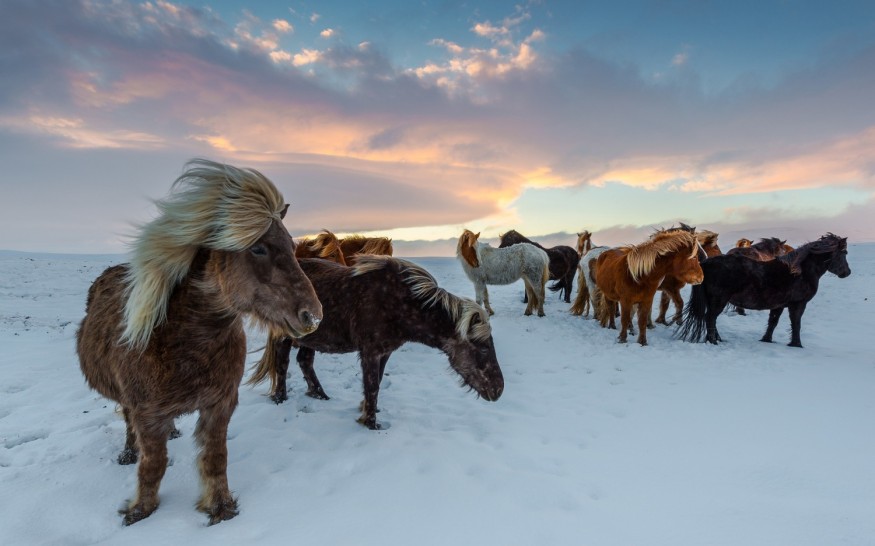The Norse horse is a hardy beast that can withstand Iceland's elements year-round, and so they are ideal to use as a means of transportation in heavy snow. This Viking stock can withstand it even as the snow clings to its teddy bear-like coat, having been purebred for 1,000 years.
In the west of Iceland, near Borgarnes, is where a herd of Norse horse lives. Hestaland horseriding is run by Gudmar who said that the best way to be close to nature in the area is through being on horseback. In that way, one would be able to notice something that they usually do not see.
Although Icelandic horses have low-slung bodies, anyone who rides them would still experience a smooth ride and perhaps a new perspective in seeing the beautiful view.

Norse Horse as Part of the Life in Iceland
Iceland seems the only place where horses can fly instead of their usual three gaits- walk, trot, and canter or gallop. Uniquely, these Icelandic horses have five as they like to surprise their riders by bursting into a merry four-beat single-foot gait known as 'tolt.'
The ancestors of these magical beasts came from those that were brought by the Norse settlers more than 1,000 years ago, hence, the name Norse horse. Since then, they have played a significant role in Icelandic life.
They have been used as a means of transportation in the heavy snow. But in spring, communities would jump on horseback to round up the wild-roaming sheep of the farmers.
The picture of people living close to nature is best seen in the western part of the country, near Reykjavik, where more than 360,000 population live, but beyond the golden circle where most tourists flock.
Touring Iceland
Anyone who wants to tour Iceland should visit the Krauma baths to experience their steaming-hot geothermal water surrounded in the silence of the mountains and enjoy a mug of frothy beer. The place is located ninety minutes from the country's capital.
The west side of the country is the snow-spotted lava fields and mountains that are reflected in the lakes. The scene seems to stretch to infinity with no forests insight.
The tiny town in the western part of Iceland is a gateway to the Viking region, where the Stedji beer brewery can be found. Water in the area is so pure, coming from the glaciers, which makes Iceland a magnet for microbrewers although beer that is above 2.25% has been banned already in 1989.
Exploring further in the 56-mile-long Snaefellsnes peninsula, often described as little Iceland for its diverse mountains, its jewel Snaefellsjokull glacier at the tip, sleepy fishing villages, and gothic black sand beaches have immortalized the 1864 novel Journey to the Center of the Earth written by Jules Verne.
West Iceland maybe once a mysterious place that the Vikings have landed on, but today it has become for its citizens to explore even its most remote areas. Locals would recommend experiencing the wild adventure of seeing the country as much as how the Vikings did in the past through soaring the tundra on the back of a Norse horse.
Read More : Norway is Excavating First-Ever Viking Ship in 115 Years But Needs to Save it First From Fungus
Check out for more news and information on Norse Horse and Iceland on Science Times.












